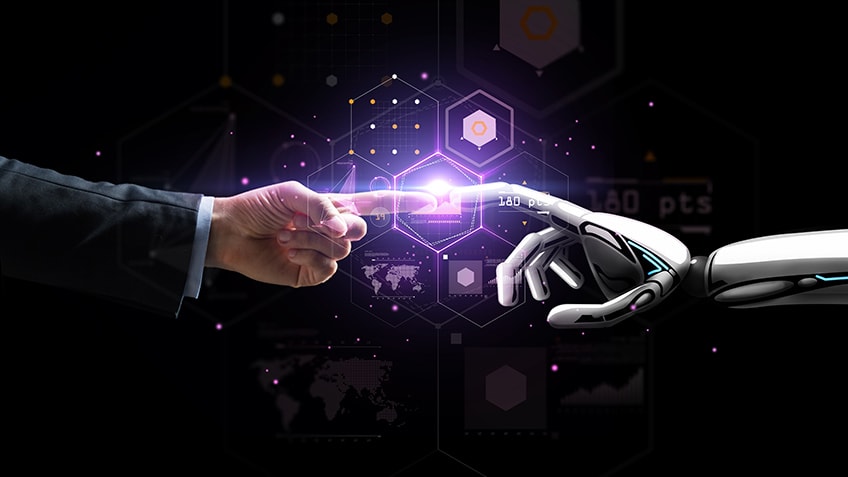According to our Tech Vision survey, 75% of the executives have indicated to be out of business by 2025 if they not only deploy AI for experimentation and automation, but also fully scale it across their enterprises. What’s more, leading companies that invest in AI are set to boost revenue over 30% over the next four years.
It’s expected that companies are set to reimagine their core business processes in a more human-centric manner and re-engineer the experiences that bring technology and people together. To facilitate such true human-machine collaboration, companies need to find ways to replace the classical ‘request and response’ relationship between them with an experience that is interactive, exploratory and adaptable. Therefore, human-machine collaboration is a must to jointly discover, co-create, scale and sustain disruptive solutions.
Companies are already applying intelligent automation to handle a mass of behind-the-scene activities and streamline their existing processes end-to-end. They minimize manual interventions by combining AI tools—such as robotic process automation (RPA) and virtual agents—to handle customer interactions in call centers and customer service sites, thereby using more human-like conversation.
This helps offset the burden of repetitive low-visibility tasks. As a result, employees can focus on higher-value tasks that increase efficiency and reduce costs. At the same time, they avoid the creation of new value and agility by reimagining core business processes.
However, reimagining business processes and pursuing them is not as straightforward as it might seem. It requires a different mindset while the risk to get stuck in the old way of doing things is high. Change is no longer episodic and human-led but rather self-adaptive and based on real-time input from both humans and machines.
Three industry examples
Design teams at VW and BMW are working with generative AI design tools—such as Autodesk—tocreate car parts like wheel rims and car seats. They feed Autodesk with technical parameters, constraints and design concepts. In turn, designers see the software cycling through thousands of bizarre unexpected designs for the car parts. During this creative process, designers transform into conductors that set directions and make decisions while the tool is crunching the numbers.
This is a nice example of joint AI-collaboration. The result is that they’ve managed to produce significantly lighter car parts and reduced the development to manufacturing cycle from 1.5 years to only a couple of months.
Taking a step further, where end consumers are directly collaborating with AI-machines to create their own products without designers getting in between, is brewing company IntelligentX. The company bills its products as the first beer brewed by AI. It directly translates customer feedback, received through Facebook Messenger, into recipe changes, which affect the brew composition over time. The goal is not to create the ‘perfect’ beer—which does not exist—but rather create innovative and personalized beer that adapts to changing tastes of the people who are drinking it.
Another great example is Insilico Medicine. The company works with scientists using Nanome—the VR computational chemistry software platform—to refine new, AI-generated drugs for COVID-19. Scientists are collaborating virtually using Oculus Quest/Rift to design new molecules and discover potential new drugs for treatments such as type 2 diabetes, chronic kidney disease, breast cancer, cardiovascular disease and age-related diseases.
This new way of working can potentially speed-up the discovery and preclinical stages by a factor of 15. Also, it can potentially improve the predictions on efficacy and safety of drugs, which could save billions of lives.
How to apply?
Several challenges need to be addressed to foster truly human-machine collaboration and fully deploy AI within the organization. How to reimagine core business processes that deliver value to the business, customers and the environment? How to scale-up an AI-solution from piloting and sustain it with continuous improvements? How to reskill people so that they can collaborate with intelligent technologies? How to set a strong data foundation? How to ensure transparency and trust? And, how to implement ‘explainability by design’ with proper policies and principles?
The above mentioned topics require critical thinking to identify where AI technology can support your organization. Would you like to further discuss this in more detail, feel free to reach out to me.
Source: LinkedIn
Publisher: Ali Yuksel, Associate Director at Accenture
